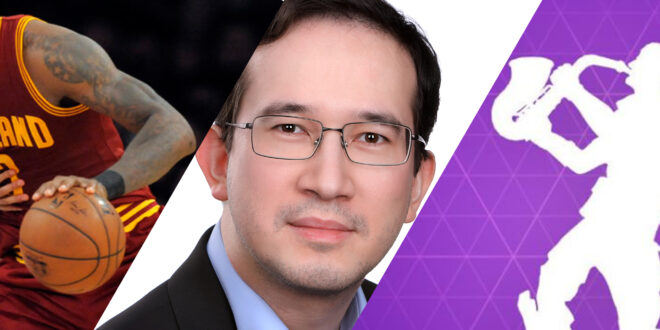Paul Lanois, Director at Fieldfisher, is an attorney based in Silicon valley who regularly publishes articles on technology law and is frequently invited to speak on such topics in the United States and across Europe. He can be contacted at Paul.Lanois@fieldfisher.com.
In light of the staggering revenues generated by video games, it should come as no surprise that there is an increased focus on the content added into video games, particularly from an intellectual property perspective. Recently some US courts addressed the topic of intellectual property in video games: the rendering of specific tattoos on real professional basketball players, the use of certain vehicles and the depiction of signature moves.
NBA 2K
On March 26, 2020, a federal judge ruled that 2K Games and Take-Two Interactive Software did not infringe copyright when the popular game series ‘NBA 2K‘ replicated in-game tattoo designs of basketball players such as LeBron James. The company Solid Oak Sketches sued 2K Games and Take-Two Interactive, alleging it owns the copyrights for tattoos that are depicted on several prominent professional basketball players featured in the games.
Judge Laura Taylor Swain first found that the use of the tattoos in the games was ‘de minimis’: the tattoos comprise only a minuscule proportion of the game data and the tattoos did not play any significant role in the marketing of the NBA 2K games.Judge Swain also found that when players granted the right to include their likenesses in games, this right necessarily included the right to depict the players with their tattoos since the tattoos are elements of their likeness.
Finally, Judge Swain found that the use of tattoos in the game is protected by fair use since the tattoos were used in the games only in order to accurately depict the physical likenesses of real-world basketball players.
As they stand, the decisions do appear as victories for the video game industry.
CALL OF DUTY
On April 1, 2020, another federal judge ruled that the Call of Duty games may use Humvee vehicles as a mode of transportation since the depiction of the vehicles in the games helps increase realism in a game simulating modern warfare. In its lawsuit filed in 2017, vehicle manufacturer AM General sued Activision Blizzard and Activision Publishing, alleging that Call of Duty players were being “deceived into believing that AM General licenses the games or is somehow connected with or involved in the creation of the games” due to the use of Humvee vehicles in ‘Call of Duty’ games.
In the decision, Judge George Daniels held that if “realism is an artistic goal, then the presence in modern warfare games of vehicles employed by actual militaries undoubtedly furthers that goal“. Judge Daniels further found that the likelihood of consumer confusion was low, on the basis that there is no risk that someone would mistakenly buy a Call of Duty game instead of a Humvee vehicle (and vice versa) out of sheer confusion about who built or distributed the product. Ultimately, Judge Daniels ruled that the vehicle manufacturer AM General did not demonstrate any harm to its trademarks arising from the presence of Humvee vehicles in the ‘Call of Duty’ games. Accordingly, the suit was summarily dismissed.
FORTNITE
On March 31, 2020, a federal judge ruled that the developer of the game Fortnite, Epic Games, could replicate a musician’s ‘signature move’ in the game. Leo Pellegrino, a professional baritone saxophone player, sued Epic Games for allegedly reproducing his dance moves in Fortnite. Gamers may execute these dance moves by purchasing the ‘Phone It In’ emote for about $8.
In the decision, Judge John Padova found that Epic’s use of Pellegrino’s likeness in the game is sufficiently transformative since the game characters do not share Pellegrino’s identity or appearance, nor do what Pellegrino does in real life. Game characters in ‘Fortnite’ fight in a battle royale and can execute emotes like ‘Phone It In’ while in the Fortnite universe, whereas Pellegrino is a musical performer who executes his ‘signature moves’ at musical performances. Judge Padova further dismissed the other claims made by Pellegrino, such as unjust enrichment, unfair competition or false designation of origin. However, Judge Padova ruled that the false endorsement claim may continue.
What is interesting here is that although the above-mentioned games are very different in nature, the decisions all pertain to the use or depiction of real life elements in video games, and the thorny issue of IP law and licensing before any real life element may be used in video games. As they stand, the decisions do appear as victories for the video game industry.
Some commentators have gone as far as calling some of these decisions “landmark” rulings because they directly address the issue of ownership and copyright in video games. Nevertheless, we recommend exercising caution before reaching any conclusion, since each decision was very dependent on the facts in issue, and more importantly, each of the above three decisions were delivered by a district court. Accordingly, some degree of uncertainty will remain as to the impact of these cases on the videogame industry until the issue is brought before a court of appeals.

 MCV/DEVELOP News, events, research and jobs from the games industry
MCV/DEVELOP News, events, research and jobs from the games industry




